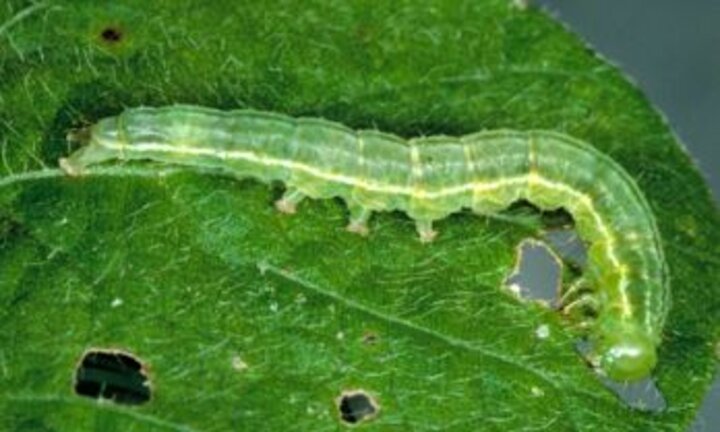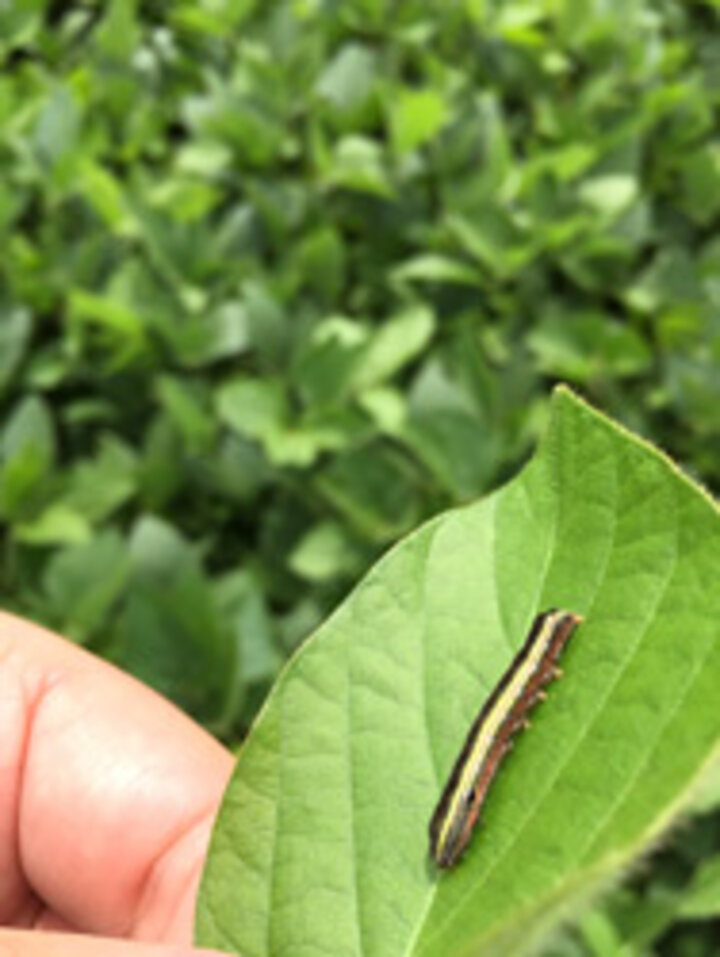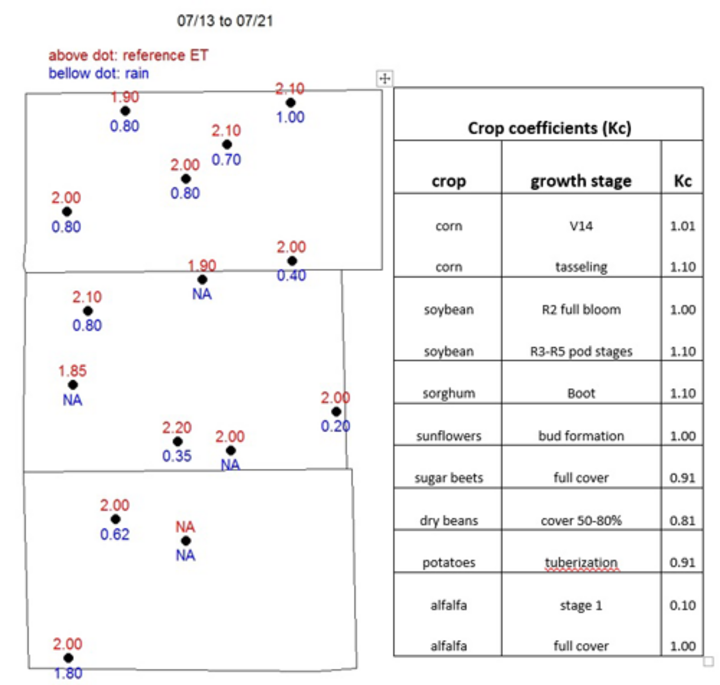


Extension Crop Report July 20-24
An array of foliar-feeding insects are now in soybean fields in Dodge and Washington counties (Figure 1). It is sometimes hard to determine the percent defoliation and to identify which insects are causing the defoliation in your soybean crop. As soybeans begin to set pods, an insecticide treatment generally is warranted when the combined defoliation from all pests approaches 20% and active feeding is still occurring. However, most people tend to overestimate the defoliation.
For more information estimating defoliation and treatment recommendations, please see Decision Making for Defoliating Insects in Soybean in this week's CropWatch. The following foliar-feeding insects were found in soybean during the July 16 Dodge County Crop Condition Tour and recent field visits:
- Caterpillars/larva – thistle caterpillar, alfalfa caterpillar, green cloverworm, stalk borer, and yellowstriped armyworm
- Beetles – bean leaf beetle, southern corn rootworm beetle, and grape colaspis
- Grasshoppers – redlegged grasshopper nymph and probably others
For more information on local crop pests in Dodge and Washington counties, please visit Crop Tech Cafe.


Strahinja Stepanovic, cropping systems Extension Educator in southwest Nebraska: Isolated thunderstorms delivered 0.2 to 1.8 inches across the Upper Republican NRD. Reference evapotranspiration (ET) losses were 2.0 inches on average. To estimate crop water use on your farm obtain the weekly reference ET value from location closest to you (see Nebraska Agricultural Water Management Network ET resources) and multiply that value by crop coefficient provided in the table. Figure 5 shows ET values for three counties in southwest Nebraska.
In wheat, harvest is 95% done! Dryland yields range from 20 bu/ac to 90 bu/ac. Farmers that had hard winter kill and didn't spray wheat for stripe rust had lover yield and lower test weight (53-55 lb/bu). Wheat kernels (Figures 3-4) diseased with ergot and/or Fusarium head scab have been observed. Although these did not appear to be a major yield limiting-factor, they can affect marketability of wheat seed. Loads can be rejected at the elevator if 0.05% of wheat kernels have ergot (about 0.5 oz/bu) or if over 1 ppm concentration of DON toxin has been detected in Fusarium-damaged kernels. Setting up your combine to blow out "chaffy" seed can take care of this problem.
Corn is from V14 to tasseling growth stage. Adult western bean cutwormd have been emerging in the past week. If 5-8% of corn plants have egg masses and/or small larvae, consider an insecticide application either through a center pivot irrigation system or by airplane. It may be beneficial to select an insecticide that controls both spider mites and western bean cutworm as mite populations are increasing in the area. For more information see this CropWatch article on western bean cutworm.
Field pea harvest (Figures 1-2) is in progress; dryland yields of 40 bu/ac have been reported. Soybeans are at R1-R3 growth stage. Milo is from V8 to boot. Potatoes are in the tuberization stage. Dry beans are at 50-80% cover. Sugarbeets are at full cover. For more information and pictures visit www.agwithstrahinja.wordpress.com. (July 21, 2015)
